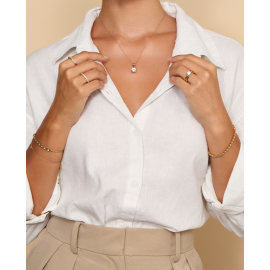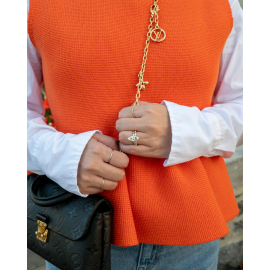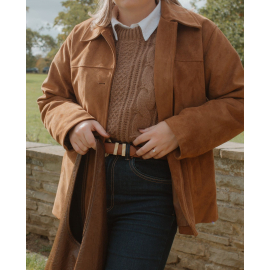Price match guarantee

We’ve teamed up with Klarna to provide flexible payment options, allowing you to shop the way you want. With Klarna, you can split your payment into 3 instalments or choose to pay later, making your shopping experience smoother and more convenient. Your order total must be between £100 and £499 to qualify.

We’ve teamed up with Klarna to provide flexible payment options, allowing you to shop the way you want. With Klarna, you can split your payment into 3 instalments or choose to pay later, making your shopping experience smoother and more convenient. Your order total must be between £100 and £499 to qualify.

March 07, 2019 | by Admin
It is law within the UK that every item of precious metal sold such as Platinum, Gold, Silver is stamped labelling the item with the type of metal it is. Platinum pieces which weigh less than 0.5 grams, 18ct Gold and Palladium pieces weighing less than 1.0 gram and Silver pieces weighing less than 7.78 grams are except from hallmark.
At Diamonds Factory all our products are hallmarked as per UK hallmarking law from London Assay Office (The GoldSmith Company)
The Goldsmiths' Company Assay Office is the oldest assay office in the United Kingdom. It has provided hallmarking services since The Goldsmiths' Company was founded in the 1300s. The company received its royal charter in 1327 and ranks 5th in order of precedence of the 12 Great Livery Companies of the City of London.
Hallmarking dates back to the 1300s when Edward I of England passed a law requiring any item made of silver, which was offered for sale, to be at least of equal quality as that of the coin of the realm (silver currency). The wardens of The Goldsmiths' Company were tasked with visiting workshops in the City of London to assay (test) silver articles. If these articles were found to be below standard they were originally destroyed and the metal forfeited to the King. If they passed, each article received the King's mark of authentication - the mark of a leopard's head. By 1478, there were several hundred workshops and merchants manufacturing silver articles in the City of London. It was not possible for the wardens to visit them all so the merchants were ordered to bring their items to Goldsmiths' Hall for testing and marking and a permanent Assay Office was established in the building. This is the origin of the term hallmark - struck with the King's mark at Goldsmiths' Hall.
In 1544 the Goldsmith's Company adopted the King's mark as their town mark and the mark of the leopard's head is now internationally recognised as the mark of this assay office.
The Goldsmiths's Company Assay Office is still based at Goldsmiths's Hall and remains the oldest company in Britain to be continually trading from the same site. However, it also has two satellite offices; at Greville Street in Hatton Garden in the heart of the London jewellery quarter and within a high security complex near London's Heathrow airport. It now has a new off-site facility within the Dalston-based jewellery manufacturer, Allied Gold. This is the first time in the Assay Office's 700 year history that it has opened permanent hallmarking services on a customer's premises.
In addition to hallmarking, the office has now expanded its range of services to support the jewellery trade and enforcement authorities. It offers a variety of specialist analytical services including nickel, lead & cadmium testing, antique silver dating, non-destructive compositional analysis, plating thickness measurement and a melt and assay service for scrap precious metal carried out in their fully independent on-site laboratory. Other services offered are a jewellery valuation service, laser marking, trading standards assistance, high quality photography and a comprehensive range of training and educational seminars, lectures and specialist events.






Classy, timeless and elegant: tennis bracelets are the ultimate fashion accessory. The dazzling sparkle is guaranteed to turn heads for all the right reasons, upgrading even the most simple of outfits in an instant. Knowing how to clean tennis bracelets safely seems a lot harder than it really is. Don’t let your diamond bracelet lose its shine, simply follow our six-step cleaning process to have it looking like new again.
How to clean a tennis bracelet
What you’ll need:
● Fragrance-free washing up liquid
● Warm water
● Small shallow bowl
● Soft new toothbrush or jewellery cleaning brush
● Mesh colander
● Microfibre cloth
Step one: Fill a bowl with clean warm water and add a few drops of fragrance-free washing up liquid, stirring until the mixture creates bubbles. You don’t need a specific amount of water, just enough to cover the bracelet completely.
Step two: Put the bracelet in the mixture and move it around slightly using your finger or the blunt end of a wooden skewer. This should help shift some of the tough residue that builds up on jewellery through daily wear.
Step three: Leave the bracelet in the mixture to soak for 10 to 15 minutes to loosen up more stubborn stains.
Step four: Take your tennis bracelet out of the mixture, holding it above the bowl before gently wiping the diamonds with the toothbrush. Watch out for any loose diamonds; this process won’t damage your jewellery at all, but it can nudge already loose diamonds out of place.
Step five: Once you’re happy with how clean your jewellery is, pat it dry with an unused microfibre cloth. Be very gentle and avoid rubbing the bracelet as this can cause the cloth to get stuck on its prongs.
Step six: When you’re finished with the cleaning process, tip the soapy solution through a mesh colander. This will catch any unsecured diamonds that may have popped out so you can get them re-set by a professional.
How to clean a diamond bracelet - tips and tricks
Keeping your diamond tennis bracelet looking its best is surprisingly easy, right? Here are a few more tips and tricks that are sure to keep it sparkling.
Tip one: Using fragrance-free washing up liquid is important as perfume is known to tarnish jewellery.
Tip two: Avoid putting perfume, lotion or anything containing a scent near your jewellery. Heavy moisturiser, in particular, can cause a heavy build-up of grime.
Tip three: Take your jewellery off before showering or cleaning your home to keep it cleaner for longer. The chemicals used in cleaning products tarnishes jewellery very quickly and noticeably, so it’s worth putting them in a safe place.
Now that you know how to clean a diamond bracelet, why not treat yourself to a new addition? You’ll find a luxurious range of tennis bracelets from our site.
For more expert information on how to clean diamond jewellery, follow our other useful tips and tricks on how to clean your diamond engagement ring safely at home and also how to clean your diamond earrings.
Bezel set tennis Bracelet
From £3,347